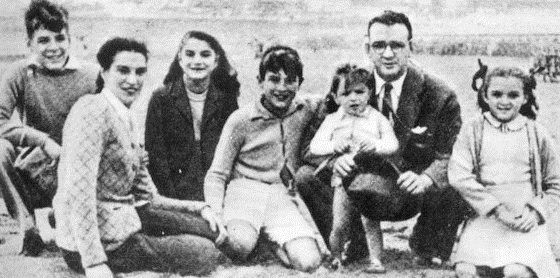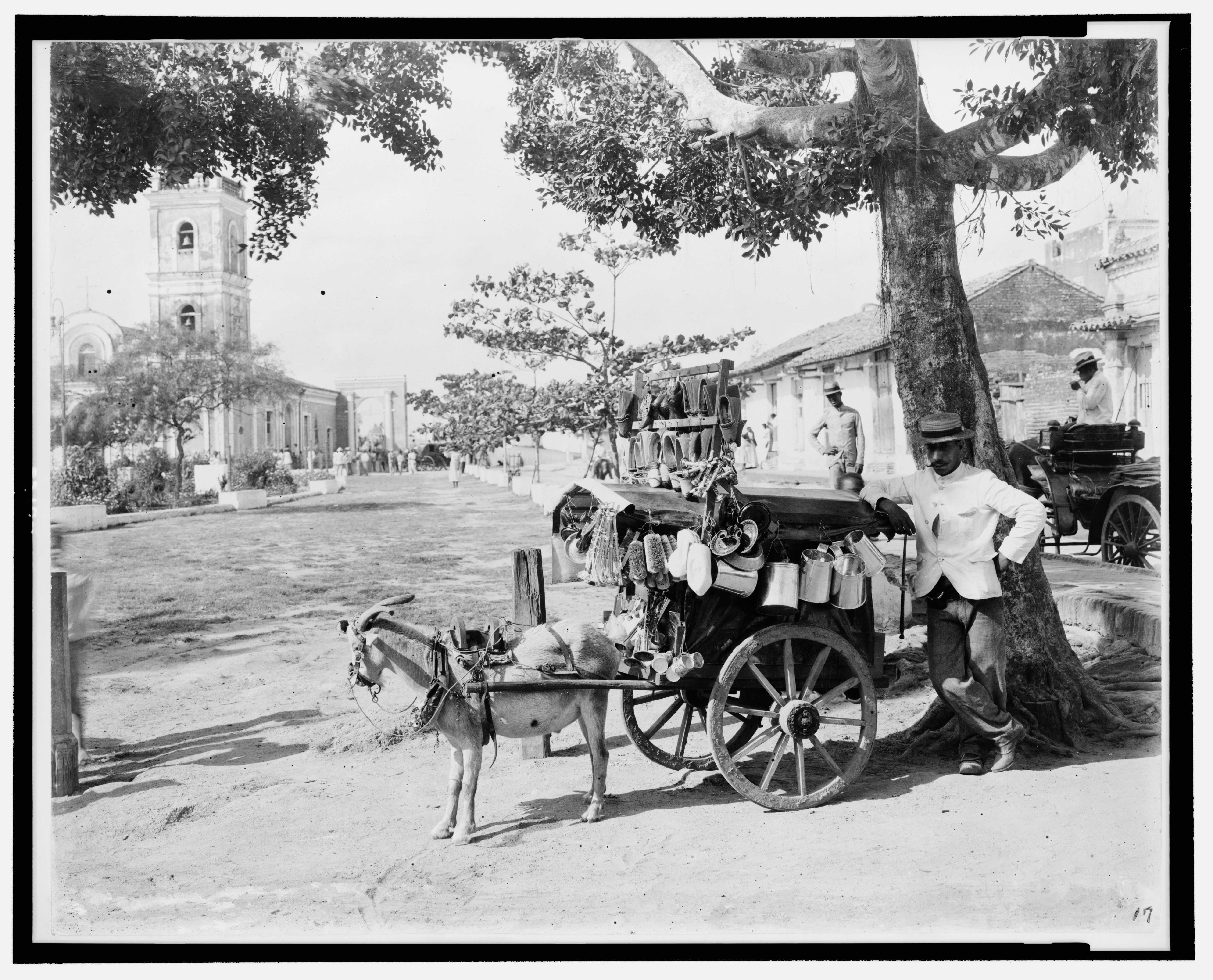|
Lalo Sardiñas
Eduardo "Lalo" Sardiñas was a combatant of Cuban Revolution, and a member of the 26th of July Movement, led by Fidel Castro during 1958 and 1959. Biography Eduardo "Lalo" Sardiñas was a merchant who worked in the Sierra Maestra area in the 1950s. In 1957 he joined Fidel Castro's newly established guerrilla group after killing a stranger who had entered his home. When the Second Column (the so-called Fourth Column) was created under the command of Che Guevara, he appointed Lalo as his second in command, with the rank of captain. In various fights and skirmishes he demonstrated courage and intelligence. In September 1957, Sardinas decided to punish one of his men for a breach of discipline. He tried to hit him in the head with his pistol, but he, accidentally, shot the man and killed him on the spot. The event produced a general reaction from the guerrillas demanding that Sardiñas be shot. Che Guevara and Fidel Castro had a different opinion than that of the majority of the re ... [...More Info...] [...Related Items...] OR: [Wikipedia] [Google] [Baidu] |
Cuban Revolution
The Cuban Revolution ( es, Revolución Cubana) was carried out after the 1952 Cuban coup d'état which placed Fulgencio Batista as head of state and the failed mass strike in opposition that followed. After failing to contest Batista in court, Fidel Castro organized an armed attack on the Cuban military's Moncada Barracks. The rebels were arrested and while in prison formed the 26th of July Movement. After gaining amnesty the M-26-7 rebels organized an expedition from Mexico on the Granma yacht to invade Cuba. In the following years the M-26-7 rebel army would slowly defeat the Cuban army in the countryside, while its urban wing would engage in sabotage and rebel army recruitment. Over time the originally critical and ambivalent Popular Socialist Party would come to support the 26th of July Movement in late 1958. By the time the rebels were to oust Batista the revolution was being driven by the Popular Socialist Party, 26th of July Movement, and the Directorio Revoluci ... [...More Info...] [...Related Items...] OR: [Wikipedia] [Google] [Baidu] |
26th Of July Movement
The 26th of July Movement ( es, Movimiento 26 de Julio; M-26-7) was a Cuban vanguard revolutionary organization and later a political party led by Fidel Castro. The movement's name commemorates its 26 July 1953 attack on the army barracks on Santiago de Cuba in an attempt to start the overthrowing of the dictator Fulgencio Batista. This is considered one of the most important organizations among the Cuban Revolution. At the end of 1956, Castro established a guerrilla base in the Sierra Maestra. This base defeated the troops of Batista on 31 December 1958, setting into motion the Cuban Revolution and installing a government led by Manuel Urrutia Lleó. The Movement fought the Batista regime on both rural and urban fronts. The movement's main objectives were distribution of land to peasants, nationalization of public services, industrialization, honest elections, and large scale education reform. In July 1961, the 26th of July Movement was one of the parties that integrated into t ... [...More Info...] [...Related Items...] OR: [Wikipedia] [Google] [Baidu] |
Fidel Castro
Fidel Alejandro Castro Ruz (; ; 13 August 1926 – 25 November 2016) was a Cuban revolutionary and politician who was the leader of Cuba from 1959 to 2008, serving as the prime minister of Cuba from 1959 to 1976 and president from 1976 to 2008. Ideologically a Marxist–Leninist and Cuban nationalist, he also served as the first secretary of the Communist Party of Cuba from 1961 until 2011. Under his administration, Cuba became a one-party communist state; industry and business were nationalized, and state socialist reforms were implemented throughout society. Born in Birán, the son of a wealthy Spanish farmer, Castro adopted leftist and anti-imperialist ideas while studying law at the University of Havana. After participating in rebellions against right-wing governments in the Dominican Republic and Colombia, he planned the overthrow of Cuban President Fulgencio Batista, launching a failed attack on the Moncada Barracks in 1953. After a year's imprisonment, Castro travel ... [...More Info...] [...Related Items...] OR: [Wikipedia] [Google] [Baidu] |
Che Guevara
Ernesto Che Guevara (; 14 June 1928The date of birth recorded on /upload.wikimedia.org/wikipedia/commons/7/78/Ernesto_Guevara_Acta_de_Nacimiento.jpg his birth certificatewas 14 June 1928, although one tertiary source, (Julia Constenla, quoted by Jon Lee Anderson), asserts that he was actually born on 14 May of that year. Constenla alleges that she was told by Che's mother, Celia de la Serna, that she was already pregnant when she and Ernesto Guevara Lynch were married and that the date on the birth certificate of their son was forged to make it appear that he was born a month later than the actual date to avoid scandal. ( Anderson 1997, pp. 3, 769.) – 9 October 1967) was an Argentine Marxist revolutionary. A major figure of the Cuban Revolution, his stylized visage has become a ubiquitous countercultural symbol of rebellion and global insignia in popular culture. As a young medical student, Guevara traveled throughout South America and was radicalized by the poverty, hunger, ... [...More Info...] [...Related Items...] OR: [Wikipedia] [Google] [Baidu] |
Fulgencio Batista
Fulgencio Batista y Zaldívar (; ; born Rubén Zaldívar, January 16, 1901 – August 6, 1973) was a Cuban military officer and politician who served as the elected president of Cuba from 1940 to 1944 and as its U.S.-backed military dictator from 1952 to 1959, when he was overthrown by the Cuban Revolution. Batista initially rose to power as part of the 1933 Revolt of the Sergeants, which overthrew the provisional government of Carlos Manuel de Céspedes y Quesada. Batista then appointed himself chief of the armed forces, with the rank of colonel, and effectively controlled the five-member "pentarchy" that functioned as the collective head of state. He maintained control through a string of puppet presidents until 1940, when he was elected president on a populist platform. He then instated the 1940 Constitution of Cuba and served until 1944. After finishing his term, Batista moved to Florida, returning to Cuba to run for president in 1952. Facing certain electoral defeat, ... [...More Info...] [...Related Items...] OR: [Wikipedia] [Google] [Baidu] |
Santa Clara, Cuba
Santa Clara is the capital city of the Cuban province of Villa Clara Province, Villa Clara. It is centrally located in the province and Cuba. Santa Clara is the List of cities in Cuba, fifth-most populous Cuban city, with a population of nearly 250,000. History Santa Clara was founded by 175 people on July 15, 1689. 138 of them represented two large families already living in the area, who owned land next to the new city. The other 37 came from seven other families and included a priest and governor, all originating in the coastal city of San Juan de los Remedios. The population of Remedios, Cuba, Remedios had to choose between leaving their city, constantly being besieged by pirates, or staying. While most decided to stay, 37 people traveled south to the interior. On June 1, 1689, they arrived at a hill, joining two other families already present at the site. According to tradition, a mass was celebrated under a tamarind tree and Santa Clara was founded. Since then, the pla ... [...More Info...] [...Related Items...] OR: [Wikipedia] [Google] [Baidu] |
Simón Bolívar
Simón José Antonio de la Santísima Trinidad Bolívar y Palacios (24 July 1783 – 17 December 1830) was a Venezuelan military and political leader who led what are currently the countries of Colombia, Venezuela, Ecuador, Peru, Panama and Bolivia to independence from the Spanish Empire. He is known colloquially as '' El Libertador'', or the ''Liberator of America''. Simón Bolívar was born in Caracas in the Captaincy General of Venezuela into a wealthy criollo family. Before he turned ten, he lost both parents and lived in several households. Bolívar was educated abroad and lived in Spain, as was common for men of upper-class families in his day. While living in Madrid from 1800 to 1802, he was introduced to Enlightenment philosophy and met his future wife María Teresa Rodríguez del Toro y Alaysa. After returning to Venezuela, in 1803 del Toro contracted yellow fever and died. From 1803 to 1805, Bolívar embarked on a grand tour that ended in Rome, where he swore to end ... [...More Info...] [...Related Items...] OR: [Wikipedia] [Google] [Baidu] |
Camagüey
Camagüey () is a city and municipality in central Cuba and is the nation's third-largest city with more than 321,000 inhabitants. It is the capital of the Camagüey Province. It was founded as Santa María del Puerto del Príncipe in 1514, by Spanish colonists on the northern coast and moved inland in 1528, to the site of a Taino village named Camagüey. It was one of the seven original settlements (''villas'') founded in Cuba by the Spanish. After Henry Morgan burned the city in the 17th century, it was redesigned like a maze so attackers would find it hard to move around inside the city. The symbol of the city of Camagüey is the clayen pot or ''tinajón'', used to capture rain water and keep it fresh. Camagüey is also the birthplace of Ignacio Agramonte (1841), an important figure of the Ten Years' War against Spain. A monument by Italian sculptor Salvatore Buemi, erected in the center of the area to Ignacio Agramonte, was unveiled by his wife in 1912. It is composed of a ... [...More Info...] [...Related Items...] OR: [Wikipedia] [Google] [Baidu] |
Jobabo
Jobabo is a municipality and town in the Las Tunas Province of Cuba. It is located in the southern part of the province, south of Las Tunas, the provincial capital. Overview Jobabo is named from the taino word jobabol, meaning ''"a place where many jobo trees grow"''. Demographics In 2004, the municipality of Jobabo had a population of 49,403. With a total area of , it has a population density of . See also *Municipalities of Cuba *List of cities in Cuba This is a list of cities in Cuba with at least 20,000 inhabitants, listed in descending order. Population data refers to city proper and not to the whole municipality, because they include large rural areas with several villages. All figu ... References External links Populated places in Las Tunas Province {{Cuba-geo-stub ... [...More Info...] [...Related Items...] OR: [Wikipedia] [Google] [Baidu] |
1950s In Cuba
Year 195 ( CXCV) was a common year starting on Wednesday (link will display the full calendar) of the Julian calendar. At the time, it was known as the Year of the Consulship of Scrapula and Clemens (or, less frequently, year 948 '' Ab urbe condita''). The denomination 195 for this year has been used since the early medieval period, when the Anno Domini calendar era became the prevalent method in Europe for naming years. Events By place Roman Empire * Emperor Septimius Severus has the Roman Senate deify the previous emperor Commodus, in an attempt to gain favor with the family of Marcus Aurelius. * King Vologases V and other eastern princes support the claims of Pescennius Niger. The Roman province of Mesopotamia rises in revolt with Parthian support. Severus marches to Mesopotamia to battle the Parthians. * The Roman province of Syria is divided and the role of Antioch is diminished. The Romans annexed the Syrian cities of Edessa and Nisibis. Severus re-establish his ... [...More Info...] [...Related Items...] OR: [Wikipedia] [Google] [Baidu] |






